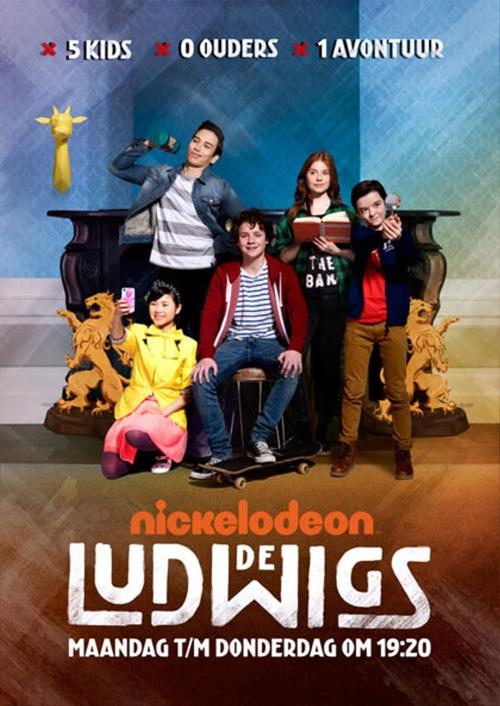
Ask Your Own Question
What is the plot?
In the opening scene of "Episode 6," the Stocker family is gathered in their living room, discussing the upcoming family reunion. Tension fills the air as each member expresses their differing opinions on how to handle the event. The matriarch, Linda, is particularly excited and insists on making it a grand affair, while her husband, Tom, is more skeptical, worried about the potential for family drama. Their teenage son, Jake, is preoccupied with his phone, showing little interest in the conversation, which frustrates Linda.
As the scene shifts, we see Jake sneaking out of the house to meet his friends. They gather at a local park, where they engage in a heated discussion about their plans for the summer. Jake reveals that he feels suffocated by his family's expectations and is eager to break free from their control. His friends encourage him to take risks and enjoy his youth, planting the seed of rebellion in his mind.
Back at the Stocker household, Linda and Tom continue to plan the reunion. Linda decides to reach out to estranged family members, including her sister, who has not spoken to her in years. Tom warns her that this could lead to more conflict, but Linda is determined to mend fences. She makes a phone call, and the tension in her voice is palpable as she invites her sister, who reluctantly agrees to attend.
The next day, Jake's rebellious streak escalates when he decides to skip school to hang out with his friends. They go to a nearby amusement park, where they ride roller coasters and indulge in junk food. Jake feels a rush of freedom, but this is short-lived as he receives a text from his mother asking where he is. Panic sets in, and he realizes he has crossed a line. His friends urge him to ignore it, but Jake's internal conflict grows.
Meanwhile, Linda is busy preparing for the reunion, and she becomes increasingly anxious about her sister's arrival. She confides in Tom about her fears of confrontation and how their family dynamics have always been complicated. Tom tries to reassure her, but Linda's worry is evident as she starts to second-guess her decision to invite her sister.
As the day of the reunion arrives, the Stocker home is filled with decorations and food. Family members begin to arrive, and the atmosphere is a mix of excitement and tension. Linda is on edge, trying to keep everything under control. When her sister, Karen, finally arrives, the air thickens with unspoken history. The two women exchange awkward pleasantries, but the underlying tension is palpable.
During the reunion, old family grievances surface. A heated argument breaks out between Linda and Karen over past misunderstandings, drawing the attention of other family members. Jake, feeling overwhelmed by the chaos, steps outside for some fresh air. He overhears his parents arguing about his recent behavior, which adds to his frustration and sense of isolation.
In a moment of impulsiveness, Jake decides to leave the reunion entirely. He hops on his bike and rides to a nearby lake, seeking solace. As he sits by the water, he reflects on his family's dysfunction and his desire for independence. This moment of introspection is interrupted when one of his friends shows up, encouraging him to join them for a night out.
Back at the reunion, Linda and Karen's argument escalates, leading to a dramatic confrontation that forces other family members to choose sides. Tom tries to mediate, but his efforts only seem to exacerbate the situation. The reunion, which Linda envisioned as a healing gathering, spirals into chaos, leaving her feeling defeated and heartbroken.
As the night progresses, Jake's friends convince him to join them for a party at a friend's house. He reluctantly agrees, hoping to escape the turmoil at home. At the party, Jake feels a sense of belonging and freedom, but he also grapples with guilt about abandoning his family during such a critical moment.
The episode culminates with a powerful scene where Linda, after the reunion has fallen apart, sits alone in the living room, surrounded by the remnants of the celebration. She reflects on her failed attempts to bring the family together and the emotional distance that has grown between them. Meanwhile, Jake, at the party, receives a call from Tom, who expresses concern for his well-being. Jake's internal struggle deepens as he realizes the impact of his choices on his family.
The episode ends on a cliffhanger, with both Linda and Jake at a crossroads, each facing their own challenges and decisions that will shape their family's future.
What is the ending?
In the ending of "Meet The Stockers," Season 3, Episode 6, the tensions between the Stocker family and their rivals reach a boiling point. The episode concludes with a dramatic confrontation that forces the characters to confront their past decisions and the consequences of their actions. The family comes together to resolve their differences, leading to a moment of unity and understanding.
As the episode unfolds, we see the Stockers grappling with the fallout from their ongoing feud with the rival family. The atmosphere is thick with tension as they gather in their living room, the weight of unspoken words hanging heavily in the air. Each family member is visibly affected by the strain of the conflict; the parents, once strong and united, now show signs of weariness and doubt. The children, caught in the crossfire, exhibit a mix of anger and confusion, their youthful innocence overshadowed by the harsh realities of their family's legacy.
The scene shifts to the rival family's home, where they are plotting their next move. The leader of the rival family, a charismatic yet ruthless figure, is determined to escalate the conflict. His motivations are clear: he seeks to assert dominance and reclaim what he believes is rightfully his. The camera captures the intensity in his eyes, reflecting a deep-seated desire for revenge that has been brewing for years.
Back at the Stockers' home, a pivotal moment occurs when the eldest son, feeling the weight of his family's expectations, steps forward to address the group. His voice trembles with emotion as he expresses his frustration over the ongoing feud. He reveals his desire for peace and a life free from the burdens of their family's past. This moment of vulnerability resonates with his siblings, who begin to voice their own feelings of discontent. The scene is charged with raw emotion, as the family members confront their fears and insecurities.
As the confrontation escalates, the rival family arrives unannounced, leading to a tense standoff. The two families face each other, the air crackling with animosity. The leader of the rival family taunts the Stockers, pushing them to react. However, instead of retaliating, the Stockers choose to stand their ground with dignity. The eldest son takes a bold step forward, challenging the rival leader to reconsider their feud. His bravery surprises everyone, including his own family.
In a surprising turn of events, the rival leader hesitates, caught off guard by the unexpected show of strength from the Stockers. This moment of vulnerability allows for a brief pause in the conflict, as both families reflect on the futility of their ongoing rivalry. The camera pans across the faces of the characters, capturing the mix of emotions--anger, fear, and a glimmer of hope.
The episode concludes with a tentative truce being established. The Stockers and the rival family agree to meet again to discuss their differences, signaling a potential end to the cycle of violence that has plagued them for so long. As the families part ways, the Stockers embrace one another, a newfound sense of unity washing over them. The eldest son, once burdened by the weight of his family's legacy, now stands tall, filled with a sense of purpose and hope for the future.
In the final moments, the camera lingers on the Stockers as they gather together, their bond stronger than ever. The episode closes with a sense of optimism, suggesting that while the road ahead may be challenging, the family is ready to face it together, united in their resolve to break free from the past. Each character, having confronted their fears and insecurities, is left with a renewed sense of identity and purpose, setting the stage for future growth and reconciliation.
Is there a post-credit scene?
In "Episode 6" of "Meet The Stockers," there is indeed a post-credit scene that adds a humorous twist to the episode's events. The scene opens with a dimly lit room where the main characters, the Stockers, are gathered around a table cluttered with various stock market charts and snacks. The atmosphere is light-hearted, contrasting with the tension of the main episode.
As the camera zooms in, we see Greg, the ever-optimistic member of the group, excitedly presenting a new investment opportunity he stumbled upon. He holds up a brochure for a seemingly ridiculous venture: a company that specializes in selling "pet rocks" with personalized names. His enthusiasm is palpable, and he gestures animatedly, trying to convince the others of its potential.
The other characters exchange skeptical glances, with Sarah rolling her eyes and muttering under her breath about the absurdity of the idea. However, as Greg continues to pitch the concept, the camera captures the gradual shift in their expressions--from disbelief to amusement. Eventually, they all burst into laughter, and the scene ends with them playfully debating what names they would give their own pet rocks.
This light-hearted moment serves as a reminder of the camaraderie among the Stockers, showcasing their ability to find joy and humor even amidst the pressures of the stock market. The post-credit scene encapsulates the show's blend of financial themes with relatable, everyday humor, leaving viewers with a smile as the credits roll.
What is the significance of the family dinner scene in this episode?
The family dinner scene serves as a microcosm of the Stockers' relationships. As tensions rise, the dinner table becomes a battleground for unresolved issues, showcasing each character's emotional state and their struggles to communicate effectively, culminating in a dramatic outburst that shifts the family dynamics.
How does the character of Lisa evolve in this episode?
In this episode, Lisa grapples with her insecurities as she tries to assert herself in the family dynamic. Her journey involves confronting her fears about being overshadowed by her siblings, leading to a pivotal moment where she stands up for her ideas during a family meeting.
What conflict arises between the Stockers and their neighbors in Episode 6?
In Episode 6, tensions escalate between the Stockers and their neighbors when a misunderstanding about property lines leads to a heated confrontation. The Stockers, feeling encroached upon, decide to take a stand, which reveals deeper issues of trust and communication within the community.
What role does the family pet play in the events of Episode 6?
The family pet, a mischievous dog named Max, inadvertently becomes a catalyst for the main conflict. His antics lead to the discovery of a hidden issue between the Stockers and their neighbors, forcing the family to confront their differences and ultimately work towards a resolution.
How does the episode explore the theme of community involvement through the Stockers' actions?
In Episode 6, the Stockers decide to organize a neighborhood cleanup as a way to mend fences with their neighbors. This initiative not only highlights their desire to improve community relations but also reveals their internal motivations to be seen as responsible and caring members of the community, despite their earlier conflicts.
Is this family friendly?
"Meet The Stockers," Season 3, Episode 6, contains several elements that may be considered objectionable or upsetting for children or sensitive viewers.
-
Conflict and Tension: The episode features family conflicts that may be intense, showcasing arguments or disagreements that could be distressing for younger viewers.
-
Emotional Struggles: Characters experience moments of vulnerability and emotional turmoil, which may resonate deeply and evoke feelings of sadness or discomfort.
-
Mature Themes: There are underlying themes of personal growth and family dynamics that may touch on issues like betrayal or disappointment, which could be heavy for some audiences.
-
Humor Style: The humor may include sarcasm or dark comedy that might not be suitable for all ages, potentially leading to misunderstandings.
-
Visuals of Stressful Situations: Certain scenes may depict stressful or chaotic situations that could be overwhelming for sensitive viewers.
Overall, while the show aims for a comedic tone, these elements could pose challenges for children or those who are particularly sensitive to emotional content.


























